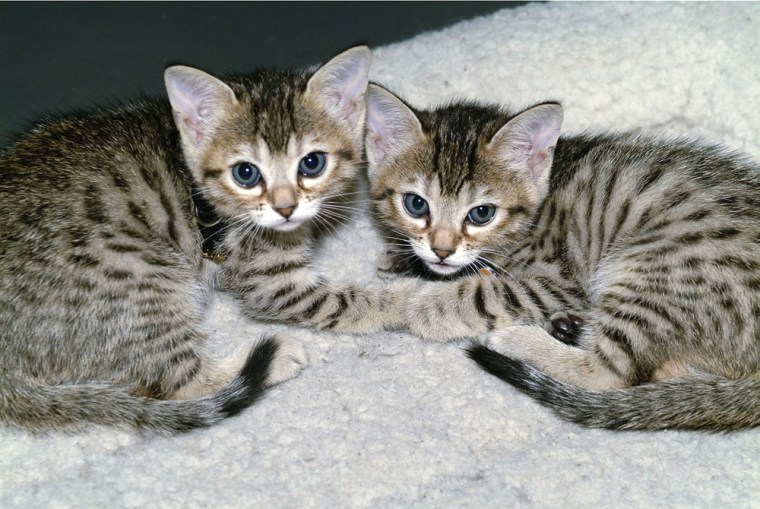Two kittens have been born using a new cloning method that may be safer and more efficient than traditional methods, a U.S. company said Thursday.
Genetic Savings & Clone promises to clone anyone’s pet — for $50,000 or so — and started with chief executive officer Lou Hawthorne’s own pet cat.
The two kittens, Tabouli and Baba Ganoush, were born to separate surrogate mothers in June, the company said.
Its report was not submitted for the traditional scientific review process and has not been scrutinized by cloning experts. But the company is less interested in the scientific questions and medical promise of cloning and more interested in its business model — helping people make copies of their beloved pets.
“These two remarkable kittens should finally put to rest the issue of resemblance between clones and their genetic donors,” Hawthorne said in a statement. “When performed by a skilled team using sufficiently advanced technology, clones resemble their donors to an uncanny degree — just as we predicted. It’s a happy day for our clients.”
Is a clone an exact copy?
Some experts have argued that cloning pets is a gamble, as non-genetic factors, such as conditions in the mother’s womb, can affect coat color and temperament.
That was the case back in 2001 when Genetic Savings & Clone produced the first cloned cat, named "cc" (which stands for "carbon copy" or "copycat"). Research published in the journal Nature cited DNA evidence that the kitten was indeed a clone, but her coloring and disposition were different from those of her genetic mother.
This time around, the company used a new method called chromatin transfer, which had been perfected by cloning expert James Robl and colleagues at Hematech LLC, based in Sioux Falls, S.D. Hematech is using the method to clone cattle that produce human antibodies in their milk.
The traditional nuclear transfer method of cloning involves taking the nucleus from a cell of the animal to be cloned, putting it into an egg cell that has had its own nucleus removed, and then triggering this egg into growing as if it had been fertilized.
It is not efficient — most eggs die — and many animals are born deformed.
How chromatin transfer works
Chromatin transfer aims to produce a cloned embryo that more closely resembles a normal embryo.
It involves dissolving the outside of the nucleus of the cell to be cloned and removing certain regulatory proteins from the chromosomes, which carry the genes, and the proteins around the chromosomes.
This entire cell with its permeable nucleus is fused to an egg cell to create the clone.
Genetic Savings & Clone said it has tried the method to duplicate Tahini, a 1-year-old female Bengal cat belonging to Hawthorne. Bengals are specially bred crosses of Asian Leopard Cats and domestic cats.
The company has contracted to produce five more clones for clients by the end of the year.
